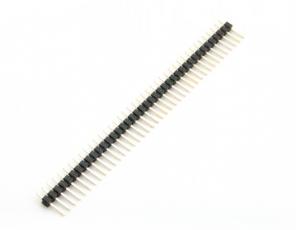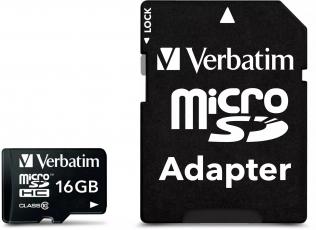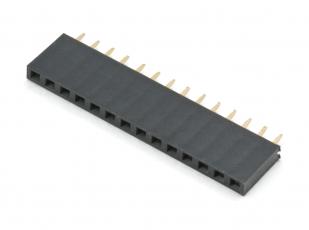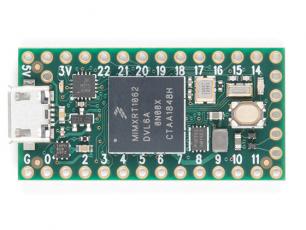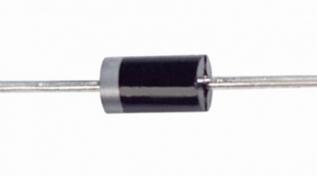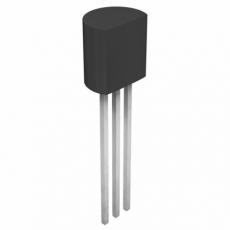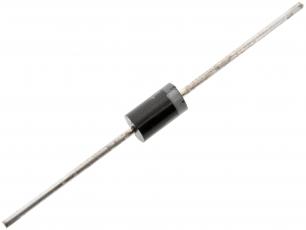Product description
This audio adaptor lets you easily add high quality 16 bit, 44.1 kHz sample rate (CD quality) audio to your projects with Teensy 4.0 (Rev D).
All versions of the audio shield support stereo headphone and stereo line-level output, and also stereo line-level input or mono microphone input.
The Teensy Audio Library lets you use the input and output simultaneously together with a toolkit of audio processing objects, to easily create all types of sophisticated audio applications. You can play multiple sound files, create synthesized waveforms, apply effects, mix multiple streams and output high quality audio to the headphones or line out pins.
Two of these 14x1 pins can be used to easily soolder the Teensy 3.x and audio board together.
A 14 pin socket and 14 pin header can be used to make them plug together.
An optional Thumbwheel Potentiometer can be added for volume or control an audio parameter.
A W25Q128JV or W25Q128FV flash memory chip may be added on the bottom side. The Teensy Audio Library can play audio clips from this memory, using the SerialFlash library. This flash memory has much lower access latency than SD cards, which allows many sounds to be played simultaneously.
Future versions of the audio library may also use this low latency flash memory for wavetable synthesis.
Alteratively, a 23LC1024 RAM memory chip may be added. The Teensy Audio Library can use the RAM chip for a multi-tap delay line, up to 1.5 seconds. See this demo video for details.
Most SD cards are optimized for sequential access, where a camera or camcorder reads or writes a single large file. All SD cards work well for playing a single WAV file at a time.
For simultaneous playing of 2, 3 or 4 stereo WAV files, many common "class 10" cards perform poorly. Even though they can support many megabytes per second in sequential access, they have high latency for non-sequential access.
PJRC has tested several brands of SD cards. We recommend SanDisk Ultra for projects where multiple WAV files will be played at the same time. SanDisk Ultra is more expensive, but its non-sequential speed is much faster.
The Arduino SD library supports up to 32 GB size. Do not use 64 & 128 GB cards.
The audio library includes a simple benchmark to test SD cards. Open it from File > Examples > Audio > HardwareTesting > SdCardTest.
All versions of the audio shield support stereo headphone and stereo line-level output, and also stereo line-level input or mono microphone input.
The Teensy Audio Library lets you use the input and output simultaneously together with a toolkit of audio processing objects, to easily create all types of sophisticated audio applications. You can play multiple sound files, create synthesized waveforms, apply effects, mix multiple streams and output high quality audio to the headphones or line out pins.
Two of these 14x1 pins can be used to easily soolder the Teensy 3.x and audio board together.
A 14 pin socket and 14 pin header can be used to make them plug together.
An optional Thumbwheel Potentiometer can be added for volume or control an audio parameter.
A W25Q128JV or W25Q128FV flash memory chip may be added on the bottom side. The Teensy Audio Library can play audio clips from this memory, using the SerialFlash library. This flash memory has much lower access latency than SD cards, which allows many sounds to be played simultaneously.
Future versions of the audio library may also use this low latency flash memory for wavetable synthesis.
Alteratively, a 23LC1024 RAM memory chip may be added. The Teensy Audio Library can use the RAM chip for a multi-tap delay line, up to 1.5 seconds. See this demo video for details.
Most SD cards are optimized for sequential access, where a camera or camcorder reads or writes a single large file. All SD cards work well for playing a single WAV file at a time.
For simultaneous playing of 2, 3 or 4 stereo WAV files, many common "class 10" cards perform poorly. Even though they can support many megabytes per second in sequential access, they have high latency for non-sequential access.
PJRC has tested several brands of SD cards. We recommend SanDisk Ultra for projects where multiple WAV files will be played at the same time. SanDisk Ultra is more expensive, but its non-sequential speed is much faster.
The Arduino SD library supports up to 32 GB size. Do not use 64 & 128 GB cards.
The audio library includes a simple benchmark to test SD cards. Open it from File > Examples > Audio > HardwareTesting > SdCardTest.




